The peacock, with its resplendent beauty and graceful demeanor, has captivated human fascination for centuries. Renowned for its vibrant array of colors and elaborate display of feathers, this majestic creature has been revered in various cultures and given rise to a multitude of interpretations. In this article, we delve into the intriguing realm of peacock symbolism, specifically examining its sexual connotations. By exploring the deeper meanings behind the peacock’s allure, we aim to shed light on the intriguing interplay between nature, symbolism, and human perception. Join us on this enlightening journey as we unravel the mysteries of peacock symbolism and delve into its allure through a lens that reveals its sensual undertones.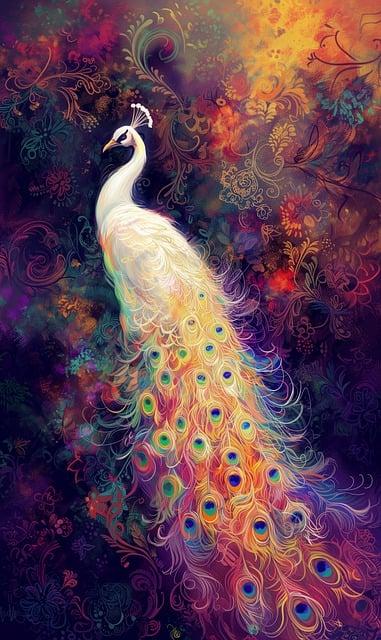
The Fascinating Symbolism of Peacocks in Historical Context
Throughout history, the peacock has captivated humanity with its striking beauty and enigmatic symbolism. This vibrant bird, revered in various cultures and mythologies, represents a flurry of profound meanings that have transcended time. Here, we unravel , shedding light on their significance across different civilizations.
In ancient Greek mythology, the peacock was associated with the goddess Hera. Regarded as a symbol of immortality, the presence of a peacock depicted divine protection and divine guidance. Moreover, its dazzling display of iridescent feathers represented the eternal cycle of life and the afterlife. In Hinduism, the peacock is an emblem of spirituality, integrity, and grace. Revered as the vehicle of Lord Murugan, the peacock embodies purity and selflessness. The intricately patterned feathers of this magnificent creature symbolize the divine beauty and the unfolding of the soul.
Key Symbolism Associated with Peacocks:
- The embodiment of immortality and divine protection
- Representation of the eternal cycle of life and the afterlife
- Symbol of spirituality, integrity, and grace
- Depiction of purity and selflessness
- Manifestation of divine beauty and the unfolding of the soul
Across the globe, peacocks have also symbolized royalty, appearing extensively in medieval and Renaissance art. The bird’s regal aura and majestic plumage were often associated with wealth, power, and nobility. In Christianity, the peacock’s ability to shed and later regenerate its feathers made it an emblem of resurrection and the triumph of the spirit over death. This motif was employed in religious art to illustrate the transcendent nature of the soul.
As we explore the symbolism of peacocks throughout history, it becomes evident that their allure extends far beyond their physical beauty. These awe-inspiring creatures have embodied notions of divinity, spirituality, and regality, leaving an indelible mark on numerous cultures and artistic expressions. From the captivating mythology of ancient Greece to the religious art of the Renaissance, the peacock’s symbolism continues to fascinate and inspire, offering us a glimpse into the intricate tapestry of human perception and beliefs.
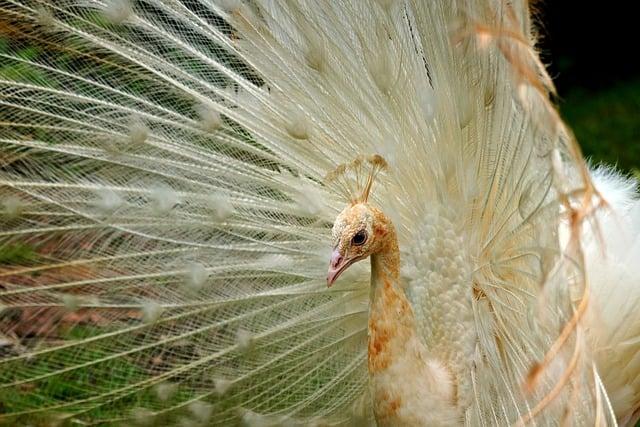
Exploring the Intricate Connection Between Peacock Symbolism and Sexuality
The peacock, renowned for its dazzling plumage, has long been associated with various symbolic meanings. One intriguing aspect that merits attention is its intricate connection to sexuality, which has fascinated cultures throughout history. Delve into the mesmerizing world of peacock symbolism, as it provides fascinating insights into human desires and allure.
1. Seduction: Peacocks have captivated the human imagination for centuries with their extravagant display of feathers. Their vibrant colors and graceful movements symbolize seduction and flirtatiousness, relating to the complex nature of human sexuality. Just as a peacock spreads its feathers to attract a mate, individuals may use their charm and allure to entice and captivate others.
2. Sexual confidence: The peacock’s confident strut and regal bearing mirror the mindset needed to embrace sexuality without inhibition. Like the peacock, each person possesses their own unique beauty, and embracing one’s own sexuality with confidence can be empowering. The peacock’s symbolism of sexual confidence encourages individuals to embrace their desires and express their sexuality authentically.
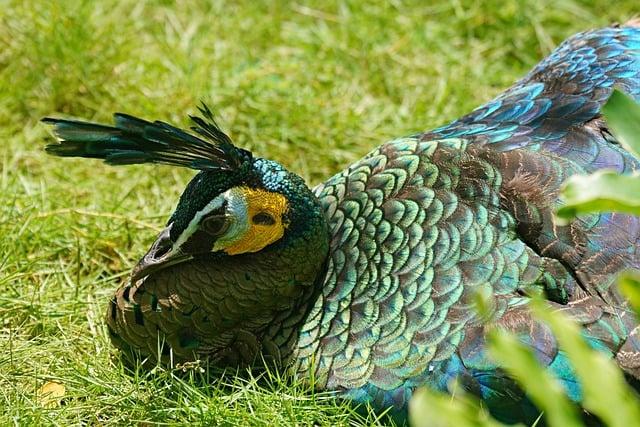
Distinctive Elements of Peacock Imagery: Understanding the Subtle Meanings
When it comes to peacock imagery, there are several distinctive elements that carry subtle meanings. These captivating birds have long been associated with various symbolisms and cultural representations, making them a popular subject for artists, writers, and designers alike. Understanding these elements can deepen our appreciation for the rich symbolism behind peacock imagery.
One key element of peacock imagery is its vibrant plumage. The intricate pattern of their feathers consists of a brilliant combination of blues, greens, and purples, creating a mesmerizing visual spectacle. This exceptional color palette symbolizes beauty, grace, and immortality. The iridescent quality of the peacock feathers further enhances their symbolism, as they represent the ever-changing nature of life and the self. Additionally, the eyespots present on their feathers are emblematic of protection, as they are believed to ward off evil spirits and protect against harm.
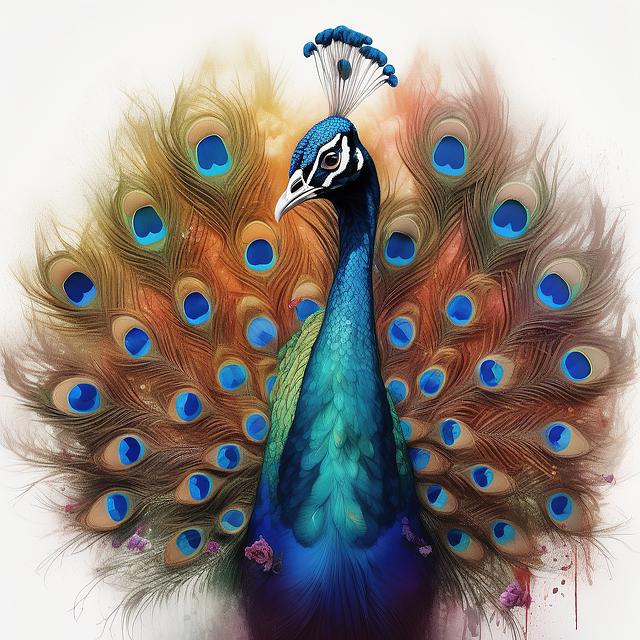
Unveiling the Symbolic Significance of Peacock Feathers in Sexual Contexts
Peacock feathers have long been associated with beauty, vitality, and fertility, making them a powerful symbol in various cultures and traditions. In the realm of sexuality, these majestic plumes carry a profound significance that goes beyond their aesthetic appeal. Let’s delve into the captivating world of peacock feathers to discover their symbolic connotations:
1. Sensuality: The intricate patterns and vibrant colors of peacock feathers evoke a sense of sensuality, capturing the attention and igniting desire. They are often used as accessories in intimate settings to enhance arousal and create an atmosphere of passion.
2. Fertility and Virility: The mesmerizing display of the male peacock’s feathers during courtship rituals symbolizes fertility and virility. The display acts as a visual communication, signaling strength, and genetic superiority. In sexual contexts, peacock feathers can represent the desire for procreation and the preservation of one’s lineage.
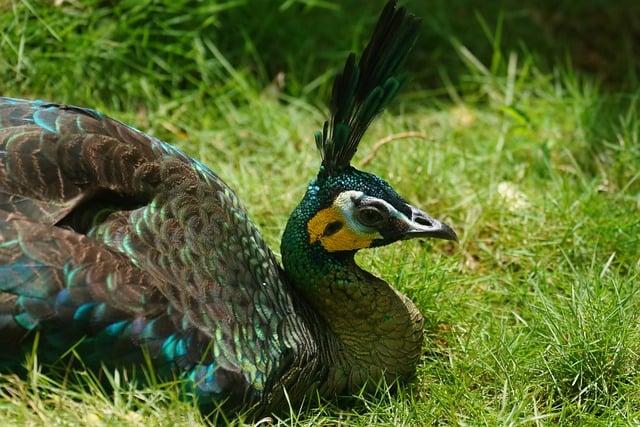
Appreciating the Beauty of Peacock Symbolism in Sensuality and Seduction
Unveiling the Allure of Peacock Symbolism
The mesmerizing beauty of peacocks has captivated human imagination for centuries. Beyond their vibrant plumage and graceful demeanor lies a deeper significance steeped in symbolism. In many cultures, peacocks represent sensuality and seduction, embodying qualities that stir the senses and awaken desire.
The symbolism of peacocks in sensuality and seduction can be traced back to ancient Greek mythology. These magnificent birds were believed to be sacred to the goddess Hera, the deity of love and marriage. Their iridescent feathers, with hues ranging from deep blues to shimmering greens, symbolize passion and enchantment. Moreover, the peacock’s extravagant courtship displays, where they fan out their feathers in a captivating dance, further embody sensuality and allure.
Peacock symbolism in sensuality and seduction is not limited to Greek mythology alone. Across various cultures, these majestic creatures have been revered as symbols of romance and desire. Let’s explore some key aspects that make the peacock an emblem of sensuality:
- Beauty: The intricate patterns and vibrant colors of a peacock’s plumage exude an irresistible allure, symbolizing the attractiveness of sensuality.
- Confidence: Peacocks display an air of confidence in their extravagant courtship dances, highlighting the importance of self-assuredness in seduction.
- Mystery: The peacock’s elegant and mysterious persona adds to its allure, urging admirers to delve deeper into the realms of passion and desire.
As we contemplate the beauty of peacock symbolism in sensuality and seduction, we can marvel at the intricate dance between nature’s wonders and our human desire for connection and fascination.
Frequently Asked Questions
Q: What does the peacock symbolize in a sexual context?
A: In a sexual context, the peacock is often associated with flamboyance, sensuality, and seduction.
Q: What is the historical significance of the peacock as a sexual symbol?
A: Throughout history, the peacock has been regarded as a symbol of fertility and sexuality in various cultures, primarily due to the bird’s elaborate beauty and vibrant display of feathers during courtship rituals.
Q: Does the peacock’s symbolism differ between genders?
A: Yes, the peacock’s symbolism can differ between genders. In some cultures, the male peacock, with its richly colored plumage, represents masculinity, while the female peahen symbolizes femininity and allure.
Q: How does the peacock’s vibrant plumage relate to its sexual symbolism?
A: The peacock’s brilliantly colored and intricately patterned feathers are thought to convey sexual attractiveness and allure, as they serve to attract potential mates during courtship displays.
Q: Is the peacock’s sexual symbolism universal across cultures?
A: While the peacock does hold sexual symbolism in various cultures, the specific associations may differ. For example, in Hindu mythology, the peacock is associated with love, while in Chinese culture, it represents beauty and benevolence.
Q: Are there any negative connotations to the peacock’s sexual symbolism?
A: While the peacock’s sexual symbolism is generally positive, it can also carry negative connotations. For instance, some interpretations link the peacock’s vanity and flamboyance to promiscuity or a superficial approach to relationships.
Q: How does the peacock’s sexual symbolism extend beyond physical attributes?
A: The peacock’s sexual symbolism goes beyond physical appearance. Its elegant dance, confident demeanor, and majestic presence also contribute to the bird’s association with sexual appeal and charm.
Q: Does the peacock’s sexual symbolism align with its overall symbolism in other areas?
A: Yes, the peacock’s sexual symbolism is often congruent with its symbolism in other areas. It is commonly associated with beauty, wealth, luxury, royalty, and spiritual enlightenment, all of which can enhance its allure.
Q: Can the peacock’s sexual symbolism be interpreted metaphorically in a non-literal sense?
A: Absolutely. The peacock’s sexual symbolism can be interpreted metaphorically as a representation of personal growth, self-expression, and the transformation of one’s inner beauty into outward radiance.
Q: How does the peacock’s sexual symbolism resonate in popular culture today?
A: In modern popular culture, the peacock’s sexual symbolism often finds expression in various forms of art, fashion, and media, where it continues to evoke a sense of beauty, elegance, and sexual appeal. In conclusion, the peacock holds deep symbolism in various cultures, representing beauty, sexuality, and fertility. Its vibrant display is not only visually captivating, but also carries a rich history of meanings. Whether admired for its physical traits or symbolic significance, the peacock remains a fascinating creature in our collective consciousness.

